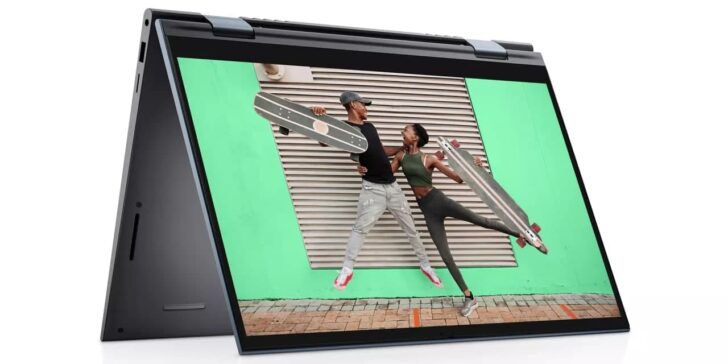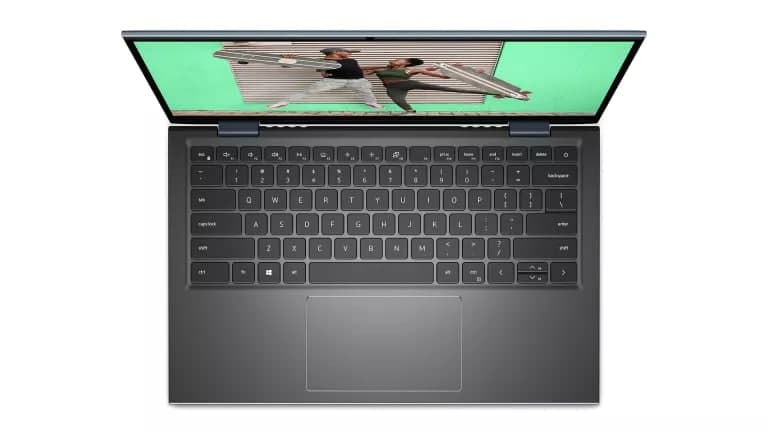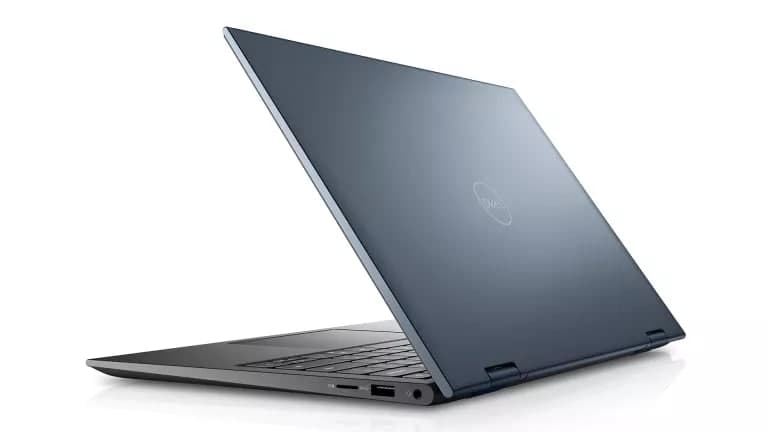
Dell Inspiron 14 (7415) Review: An affordable home computer
For some time, the Dell Inspiron series has been the cornerstone of the affordable notebook computer market, popular with students and those with limited budgets. This is why the standard Inspiron 14 is one of the best laptops for students.
Hybrid laptops or 2-in-1 machines cover a variety of models, from basic Chromebooks to ultrabooks. They provide a regular laptop experience and provide a tablet format that hides the keyboard by flipping the screen back. The hinge also allows you to set it up as a tent-like position or (lay the keyboard flat on a table) a stand-alone display.
This adaptability makes them a popular choice for homes and offices. This combination of 360-degree hinge and touch screen display means that the cost of these models is a bit higher than the regular laptop version.

The Dell Inspiron 14 2-in-1 7415 is available now, starting at £679/US$799.99. My review model is equipped with a Ryzen 7 5700U processor, 16GB of RAM and a 512GB SSD, and it is priced at £898/US$999.99. The machine can now also use the new Intel Core 11th generation processors for as low as £763/US$649. The device comes with Windows 10 Home Edition, but Dell will provide a free upgrade when it launches Windows 11 later this year.
The screen of the Inspiron 14 is a bit disappointing. The colors are good, and the video looks good on the 14-inch Full HD touch display, with thin edges but insufficient brightness. We measured it at a maximum brightness of 200 Cd/M2, which is a basic level that we think is acceptable. Working outside on a sunny day is only visible in the shadows, but you can’t see much under direct sunlight. This is disappointing, especially for a two-in-one system designed to be carried around and used like a tablet.
Above the screen is a small webcam with sliding shutters. Slide the small switch over, and a piece of physical plastic slides over the webcam. All this is contained within the screen border, so it will not break. This is a good contact for educating users or those who want to keep it confidential.
Does not include a pen, but the touch screen is compatible with Dell Active Pen PN350M. This is fixed to the upper lip of the lid with a magnet, so you are unlikely to lose it.

The housing feels well constructed, and the hinge that allows the screen to rotate to tablet mode feels very sturdy-it should withstand knocks and impacts without problems. However, the keyboard is not very good, it has a flat, squishy feel, and it’s more than I like. If you are a keyboard fanatic like me, the whole keyboard will bend slightly when you are inspired and start typing. I don’t want the laptop keyboard to feel as sturdy as the mechanical keyboard I use as a daily driver, but the more expensive cousin of the Inspiron 14 has a better, more sturdy feel. When the Muses were with me, they didn’t feel that they would succumb, and I ran wildly in poetic fanaticism.
A good choice is to include a combination standby button and fingerprint reader in the upper right corner of the keyboard, which is becoming the standard configuration of mid-range notebook computers. For curious kids or colleagues, this is the absolute advantage of a simple way to control who can log in. When you walk away to make a cup of tea, touch the button to put the device in standby mode, then touch the button to turn it on and log in when you return.
The touchpad is large and responsive, and it makes a beautiful mechanical clicking sound when pressed. It supports up to 10 touches, so you can get all the standard multi-touch functions, such as two-finger scrolling, three-finger touch, swiping up to see all running programs, etc. However, it does achieve weird wrist touches. When I put my palm on the edge of the touchpad, I mistakenly thought it was a finger click.
My Inspiron 14 evaluation model is built around Ryzen 7 5700U, which is the faster of the two options provided. The CPU includes 8 cores running at 1.8Ghz, although some can increase the frequency to 4.3GHz when needed. With 16GB of RAM, I found that this combination can do some decent work, although it lags behind faster similar products.
I tested my laptop using the PC Mark 10 benchmark, which simulates many common office tasks, such as video conferencing, digital spreadsheet processing, etc. It has a score of 5323, which is faster than the Dell XPS 15 (with a score of 6030), but a bit faster than the cheaper Asus Aspire 5, which has a score of 4007. I certainly found the Inspiron 15 sufficient for general use: it can handle spreadsheets and some minor photo editing without any problems. However, when I applied more complex filters in Photoshop, it started to suffocate, and editing high-definition video in Premiere was a cessation business because the system had difficulty creating previews.
The same goes for games: Inspiron 14 scored a rather sluggish score of 1182 in the 3D Mark’s Time Spy test. Most 3D shooting games are not playable. In Full HD resolution, the frame rate in Doom Eternal is between 10 and 25 frames per second (fps). If you reduce the resolution to something like 640 x 480, it manages the more playable 50 to 60 fps, but we are not in the 1990s anymore, and now this does not cut it.
Inspiron 14 has a good battery life, lasting more than 11 and a half hours in my PC Mark 10 video benchmark test. However, it is worth remembering that the computer only played the video in this test. Start playing games or doing serious work; this will be greatly reduced. However, it is still more than enough for most purposes and should allow you to get through a day of work or college notes.
Inspiron 14 is very competitive-today, 900 pounds / 1,000 dollars can provide you with a large number of computers. Overall, the Inspiron 14 is a good choice for this budget, with acceptable performance and build quality. However, it is not a game console. The compromise of lowering the price is obvious on a screen with a fragile keyboard and the inability to manage the brightness levels that make games and videos pop off the screen.
